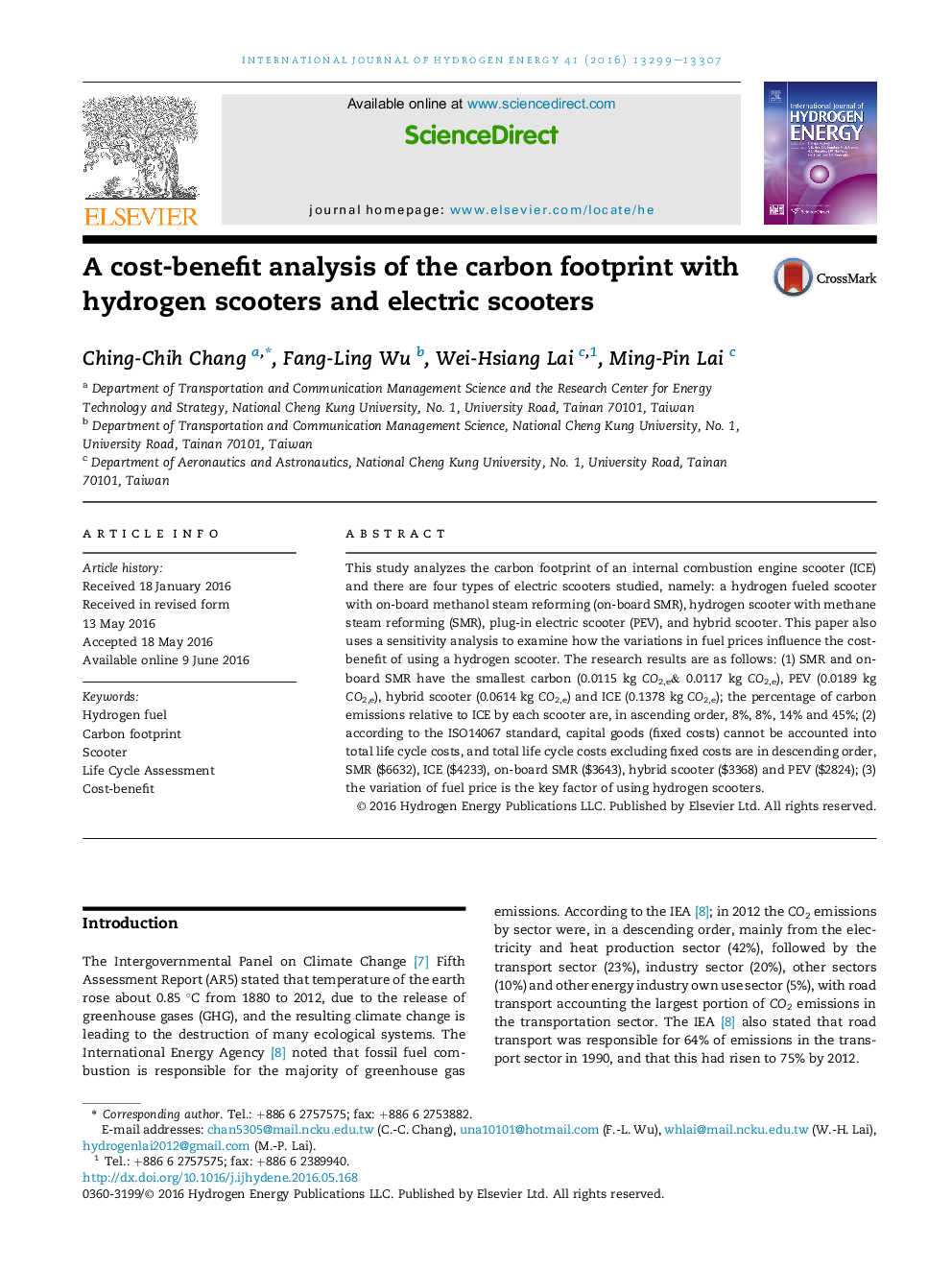| Article ID | Journal | Published Year | Pages | File Type |
|---|---|---|---|---|
| 1268243 | International Journal of Hydrogen Energy | 2016 | 9 Pages |
•This paper uses the ISO/TS14067: 2013 standard to develop model to examine the carbon footprint of a public transportation.•The carbon footprint of the service life cycle (load factor 100%) of a SMR bus is 0.0115 kg CO2,e.•SMR has the smallest carbon footprint (0.0115 kg CO2,e).•The fuel price is the key factor of using hydrogen scooters.
This study analyzes the carbon footprint of an internal combustion engine scooter (ICE) and there are four types of electric scooters studied, namely: a hydrogen fueled scooter with on-board methanol steam reforming (on-board SMR), hydrogen scooter with methane steam reforming (SMR), plug-in electric scooter (PEV), and hybrid scooter. This paper also uses a sensitivity analysis to examine how the variations in fuel prices influence the cost-benefit of using a hydrogen scooter. The research results are as follows: (1) SMR and on-board SMR have the smallest carbon (0.0115 kg CO2,e& 0.0117 kg CO2,e), PEV (0.0189 kg CO2,e), hybrid scooter (0.0614 kg CO2,e) and ICE (0.1378 kg CO2,e); the percentage of carbon emissions relative to ICE by each scooter are, in ascending order, 8%, 8%, 14% and 45%; (2) according to the ISO14067 standard, capital goods (fixed costs) cannot be accounted into total life cycle costs, and total life cycle costs excluding fixed costs are in descending order, SMR ($6632), ICE ($4233), on-board SMR ($3643), hybrid scooter ($3368) and PEV ($2824); (3) the variation of fuel price is the key factor of using hydrogen scooters.
